1. Treatment
1.1. Treatment is based on the nature of illness that caused the condition.
1.1.1. Antibiotics is an effective treatment for comma brought on by infection
1.1.2. Glucose for hypoglycemia induced coma
1.1.3. Surgery for bleeds, swelling, or tumors
1.1.4. The most common course of treatment is life support until conditions improve.
2. Types
2.1. Toxic-metabolic Encephalopathy
2.1.1. An acute condition of brain dysfunction with symptoms of confusion and/or delirium.
2.2. Anoxic Brain Injury
2.2.1. Brain condition caused by total lack of oxygen to the brain resulting in death of brain tissue.
2.3. Persistent Vegetative State
2.3.1. This is a state of severe unconsciousness. The person is unaware of his or her surroundings and incapable of voluntary movement.
2.4. Locked-In Syndrome
2.4.1. This is a rare neurological condition. The person is totally paralyzed except for the eye muscles, but remains awake and alert and with a normal mind.
2.5. Brain Death
2.5.1. This is an irreversible cessation of all brain function.
2.6. Medically Induced
2.6.1. This type of temporary coma, or deep state of unconsciousness, is used to protect the brain from swelling after an injury.
3. Assessment
3.1. Glasco Coma Scale
3.1.1. Designed for the assessment of patients whom have experienced trauma or medical emergencies. It is used to approximate neurological capacity and predict the severity of head injury.
4. Causes
4.1. Trauma
4.1.1. Head injuries can cause the brain to swell and/or bleed. When the brain swells as a result of trauma, the fluid pushes up against the skull.
4.2. Swelling
4.2.1. Swelling of brain can cause increased cranial pressure restricting oxygen, electrolytes, and hormones.
4.3. Bleeding
4.3.1. Bleeding in the layers of the brain may cause coma due to swelling and compression on the injured side of the brain.
4.4. Stroke
4.4.1. When there is no blood flow to a major part of the brain stem or loss of blood accompanied with swelling, coma can occur.
4.5. Blood Sugar
4.5.1. Hypoglycemia
4.5.1.1. When blood sugar reaches critically low levels the patient can go into a coma; however, this condition is reversible once levels return to normal.
4.5.2. Hyperglycemia
4.5.2.1. This occurs when blood sugar reaches extremely high levels without medical intervention.
4.6. Oxygen Deprivation
4.6.1. Oxygen is essential for brain function. CPR survivors of cardiac arrest are often in comas. Oxygen deprivation can also occur with drowning or choking.
4.7. Infection
4.7.1. Infections of the central nervous system can also cause coma.
4.7.1.1. Encephalitis
4.7.1.2. Meningitis
4.8. Toxins
4.8.1. Substances that are normally found in the body can accumulate to toxic levels if the body fails to dispose of them correctly.
4.8.1.1. Ammonia due to liver disease
4.8.1.2. Carbon dioxide from a severe asthma attack
4.8.1.3. Urea from kidney failure
